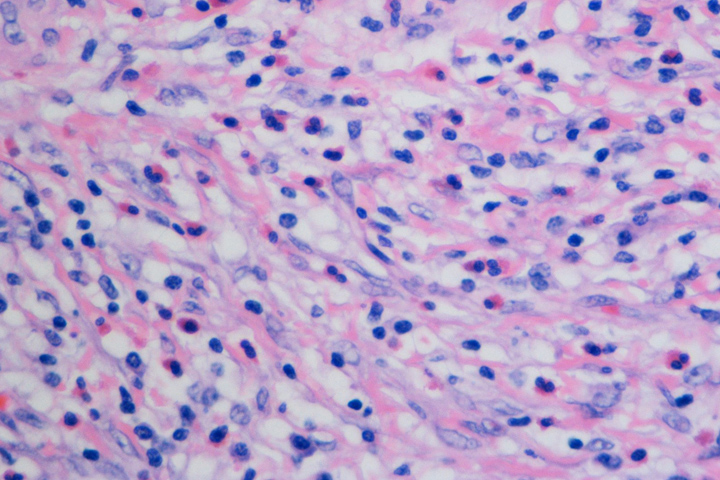Helping Some Types of Chemotherapy Penetrate Pancreatic Tumors

Will a new drug known to make chemotherapy better able to penetrate pancreatic tumors help the tumor respond more to chemotherapy?
Researchers are combining the novel drug PEGPH20, known to break down the stroma, or fibrous covering of pancreatic tumors, with gemcitabine and nab-paclitaxel, after trials with FOLFIRINOX were unsuccessful.
This clinical trial is for patients with pancreatic cancer that may possibly be surgically removable, to see if the tumor shrinks enough to become a candidate for surgery.
Adding PEGPH20 to Standard Treatment
Hyaluronic acid (HA) is a gel-like substance found all over the human body—lubricating joints so they move well, and providing structural support to cells. Researchers have found that HA has a role in promoting prostate, breast, and pancreatic cancers. These tumors produce too much HA, creating a thick layer of fibrous tissue around the tumor. This increases pressure inside the tumor, crushing blood vessels that would otherwise carry the chemotherapy drugs into the tumor. Chemotherapy is not particularly effective in people with such fibrotic tumors because the drugs cannot get to the tumor and the cancer resists treatment.
PEGylated Recombinant Human Hyaluronidase (PEGPH20) is a synthetic version of an enzyme naturally found in the body that breaks down HA. Physicians are giving PEGPH20 to pancreatic cancer patients who have high levels of HA in their tumors to see if it improves the delivery and effectiveness of standard chemotherapy drugs.
The combination of gemcitabine and nab-paclitaxel is a standard treatment for pancreatic cancer. Gemcitabine is converted into two metabolites that cause cell death. One reduces the number of building blocks necessary to make DNA; the other shortens the DNA strands. Nab-paclitaxel inhibits cell division and promotes cell death.
Monitoring and Comparison
To qualify for this trial patients must not have had prior pancreatic cancer treatment. All participants in this trial will receive the drug combination being studied. In the first part of the trial, patients undergo a series of scans and biopsies. They then start with PEGPH20 alone for a week, in what is called a run-in period. More scans and tests to evaluate tumor status follow the run-in. Then PEGPH20 is continued, in combination with gemcitabine and nab-paclitaxel. Participants are monitored for tumor response and the possibility of tumor removal. The second part of the trial is the same but with the run-in period eliminated.
We encourage you to consult your physicians for clinical trials that may be right for you. The website ClinicalTrials.gov provides more details about this trial as well as many others. You can visit the Let’s Win Trial Finder for a listing of all active pancreatic cancer clinical trials.
This trial has been terminated, and development of this drug has been discontinued.




